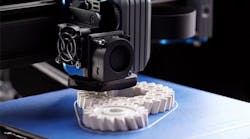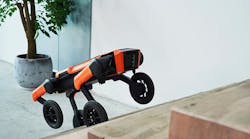Over the last few years, this has become my standard rallying cry for all things tech—a pithy, twitter-length motto for all of the wildly cool innovations that seem to pop up out of nowhere every day.
Robots and 3D printers, IoT and sensors, self-driving cars and personal drones. I love it. I love the future we are building; I love all of this new stuff and all of the incredible things we can do with it.
This is why I have included our CES 2016 recap in our February issue. CES is a kind of condensed form of I-love-the-future-ism. It contains all of the technologies and innovations that are so far ahead of the rest of the world there often isn’t even an industry for them yet. It’s all fun and cool and exciting stuff.
But really, that’s what New Equipment Digest is all about. Or should be about. This is a magazine solely dedicated to innovation; we’re jam-packed with all of the latest tools, gear, and technologies designed to do exactly to the manufacturing world as CES does to the consumer electronics world.
For the last year, I have been dedicated to building upon that position. I don’t want to just show you all of the cool new equipment coming out in this market, but also how it can work for you. I want NED to be a source of practical futurism—cool new manufacturing innovations and grounded commentary on how it can help add value to your market, your industry, and your job.
This month, I think we just about nailed that.
Our special section for February is on the Internet of Things—that weird, amorphous concept of general connectedness and all of the amazing things it is supposed to do for us.
When futurists talk about IoT, they describe its future value in terms of billions and even trillions of dollars. They say it will fundamentally change literally everything—how we work, how we drive, how we shop and eat and sleep and date and live.
That’s fine. I love it. But how does it work?
Well, there are two parts. First, there is the stuff: the sensors, modules, software, and computers needed to build an IoT infrastructure.
Check out our latest Equipment Spotlight, and the latest gear for this element is all laid out for you.
Next, you need a strategy. You can’t just jump into a new market or a new technology without knowing what you want to do with it. For this, the Internet of Things Institute’s Karen Field lays it out perfectly.
Along with that strategy, of course, there are some risks to consider.
Next week, John Hitch will begin an explosive series on cybersecurity, highlighting the potential issues and vulnerabilities in the cyber world now, and what solutions the market offers.
With IoT, cyber these risks can be immense and more than a little terrifying. But with the right gear and the right strategy, these risks can be mitigated. They all fit into the plan.
So now, it seems like we’ve hit a milestone in our re-envisioning of this magazine. After a full year of plotting and planning, it looks like we’re starting to deliver what we’ve been promising all along: a single, top-to-bottom source for the latest manufacturing and technology innovations.
And this is only the start.
Here’s to the future.
Travis Hessman
Editor-in-Chief
New Equipment Digest











